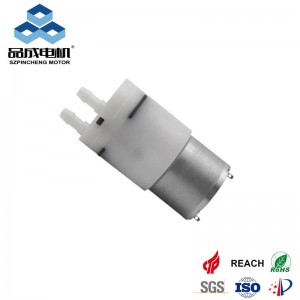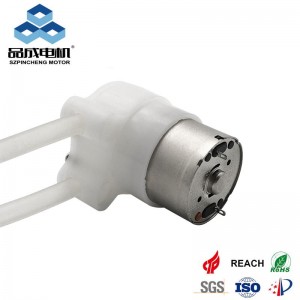Micro water pumps supplier
Controlling water flow isn’t just about turning valves—it’s a science that impacts energy use, system longevity, and process accuracy. Whether irrigating crops, dosing chemicals, or running HVAC, mastering flow rate control saves costs and prevents damage. Here’s how professionals do it.
Why Flow Control Matters
-
Energy Savings: Reducing flow by 20% cuts pump power consumption by ~50% (affinity laws).
-
Avoid Disaster: Deadheading (zero flow) overheats pumps in <5 mins.
-
Precision Demand: Labs, breweries, and medical devices need ±1% flow accuracy.
5 Proven Flow Control Methods
1. Valve Throttling (Manual)
-
How: Partially close a valve to restrict flow.
-
Tools: Gate, globe, or ball valves.
-
Best For: Low-cost fixes; static systems.
-
Limitation: Wastes energy (pump works against resistance).
2. Variable Frequency Drives (VFDs)
-
How: Adjusts pump motor’s electrical frequency → changes RPM.
-
Impact:
-
30% energy savings vs. throttling
-
Soft starts reduce pipe hammer
-
-
Use Case: Industrial pumps (e.g., Pincheng’s 3-phase VFD-compatible motors).
3. Bypass Loops
-
How: Diverts excess flow back to source via relief valve.
-
Best For: Protecting pumps at low demand.
-
Pro Tip: Size bypass line at 10–25% of main flow.
4. Multi-Pump Staging
-
How: Activate/deactivate pumps in parallel based on demand.
-
Smart Control: Use pressure transducers (e.g., 4–20mA sensors) to auto-switch pumps.
5. Impeller Trimming
-
How: Physically reduce impeller diameter.
-
Rule: Trim ≤15% to avoid efficiency crash.
-
Fixed Solution: Permanent flow reduction.
Flow Control Method Comparison
| Method | Cost | Energy Efficiency | Accuracy | Best Application |
|---|---|---|---|---|
| Valve Throttling | $ | ★☆☆☆☆ | Low | Home irrigation |
| VFDs | $$$$ | ★★★★★ | High | HVAC, industrial processes |
| Bypass Loops | $$ | ★★☆☆☆ | Medium | Small booster systems |
| Multi-Pump Staging | $$$ | ★★★★☆ | High | Municipal water towers |
| Impeller Trimming | $ | ★★★☆☆ | Fixed | Permanent flow reduction |
Key Parameters to Monitor
-
Flow Rate: Use paddlewheel sensors or ultrasonic flowmeters.
-
Pressure: Install gauges upstream/downstream (ideal ΔP: 10–30 PSI).
-
Motor Load: >110% rated amps signals blockage or overspeed.
Critical Mistakes to Avoid
-
Deadheading Pumps: Always maintain minimum flow (check pump curve).
-
Cavitation: NPSHa must exceed NPSHr by 3+ ft to prevent vapor bubbles.
-
Oversizing: Pumps at 10% flow waste 60%+ energy. Right-size!
Smart Control Systems
-
IoT Integration:
-
Adjust flow via phone app (e.g., Pinya’s PYF-SOL valves with Bluetooth).
-
Cloud alerts for leaks/pressure drops.
-
-
PID Controllers:
-
Automatically adjust VFDs based on sensor feedback (error <0.5%).
-
Industry-Specific Solutions
-
Agriculture: VFD + pressure sensors → maintain GPM across elevation changes.
-
Lab/Brewing: Peristaltic pumps (PYRP310-XA) for pulseless, sterile dosing.
-
HVAC: Secondary loop systems with delta-T control.
Pro Tip: For centrifugal pumps, flow ~ RPM. Halving RPM reduces flow 50% and power by 87%!
The Future: AI-driven predictive flow control (e.g., weather-based irrigation) and magnetically driven sealless pumps are rising.
"Flow control isn’t a luxury—it’s reliability insurance."
— Hydraulic Engineer, Pincheng Motor
Upgrade Your System Today
From manual valves to AI-enabled VFDs, precise flow control unlocks safety and savings. For industrial-grade pumps with built-in control readiness, explore Pincheng’s PYSP series—where 0-10V speed inputs meet 100,000-hour endurance.
you like also all
Read More News
Post time: Aug-08-2025




